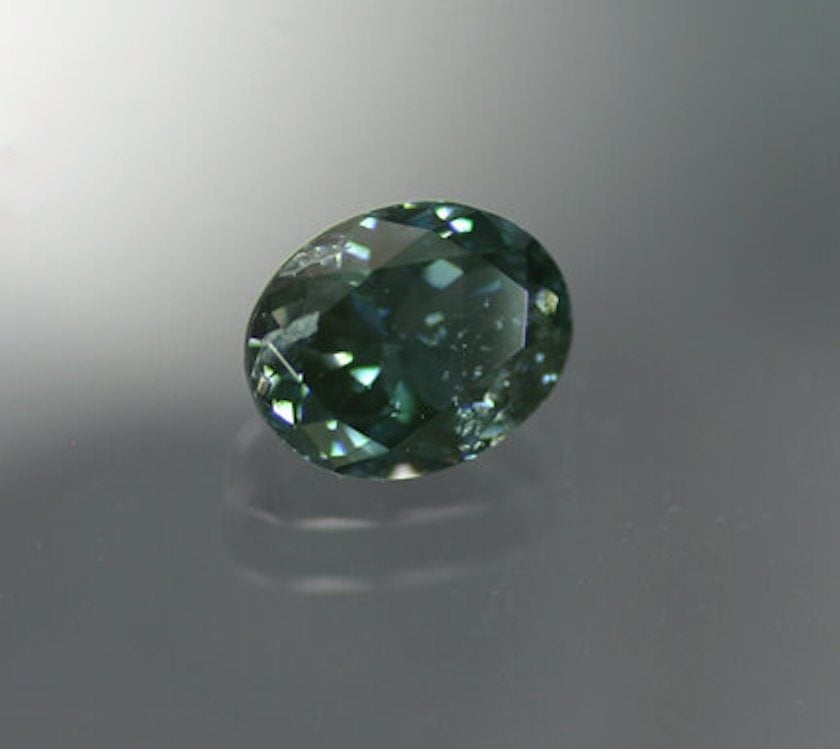Sapphirine Value, Price, and Jewelry Information
Sapphirines are durable but very rare gemstones. Although named after their typically sapphire-blue color, these gems can occur in different hues and display pleochroism, too.
2 Minute Read
Sapphirines are durable but very rare gemstones. Although named after their typically sapphire-blue color, these gems can occur in different hues and display pleochroism, too.
Start an IGS Membership today
for full access to our price guide (updated monthly).Sapphirine Value
What is Sapphirine?
Sapphirine has loaned its name to the sapphirine mineral supergroup, which contains three subgroups, including the sapphirine group.
Is Sapphirine a Type of Sapphire?
Despite its name and most well-known color, sapphirine is a gem species distinct from sapphire. However, like sapphire, it too occurs in more colors than blue, albeit rarely. These colors include shades of violet, purple, green, pink, and brown. In 2007, a red variety was discovered in Tanzania. In addition, sapphirines can show very strong trichroic colors depending on the viewing angle.
What is "Sapphirine Chalcedony"?
The term "sapphirine" has sometimes been applied incorrectly to blue specimens of chalcedony, crystalline quartz, and spinel. One specific usage in art history persists. The gemologist Fred Gray writes that the ancient Greeks created scarab-like seal rings and particularly favored light blue chalcedony. In recent times, this material received the French name of "sapphirine."
Does Sapphirine Make a Good Jewelry Stone?
With a hardness of 7.5 and poor or indistinct cleavage, sapphirines would make good stones for everyday jewelry wear, especially if you like their classic blue appearance. Unfortunately for jewelry connoisseurs, facetable crystals are exceedingly rare. On the other hand, most gem-quality rough is generally eye clean (although small).
Sapphirines occur most often as transparent grains,
How to Identify Sapphirines
Sapphirine's refractive indices (RI) are close to those of idocrase. However, sapphirines have a biaxial negative optic character, while idocrases usually have uniaxial optic characters. (Please note that idocrase may be anomalously biaxial). Sapphirines also exceed idocrase in specific gravity (SG).
An unusual, 1.54-ct, oval-cut, purplish-pink specimen from Sri Lanka (initially reported as idocrase) had the following properties:
- RI = 1.701-1.707 with a β = 1.705.
- Birefringence = 0.006.
- SG = 3.51.
The rare red sapphirine from Tanzania reportedly has the following luminescent properties under ultraviolet light (UV):
- Longwave UV: dull red.
- Shortwave UV: weak orange.
What's the Difference Between Sapphirine and Serendibite?
Serendibite, another rare mineral in the sapphirine supergroup, also occurs very rarely in gem-quality condition. Since the 1990s, faceted serendibites have begun to appear on the market. While sapphirines and serendibites may appear very similar and have overlapping properties, sapphirines usually have higher RIs and hardness.
Are There Synthetic Sapphirines?
Scientists have synthesized sapphirines for geological research. However, there is no known jewelry use for this material.
There are no known gem treatments for sapphirines.
Where are Sapphirines Found?
Madagascar and Sri Lanka are the principal producers of gem-quality sapphirines.
Other gem-quality sources include the following:
- United States: Keweenaw Peninsula, Michigan; Lake Superior, Minnesota; Milford, Utah.
- Australia; Canada; Czech Republic; Greenland; Italy; Japan; South Africa; Sweden; Tanzania; Thailand; Scotland, United Kingdom.
How to Care for Sapphirine Jewelry
Sapphirines require no special care. You can clean them safely with mechanical cleaning systems.
Joel E. Arem, Ph.D., FGA
Dr. Joel E. Arem has more than 60 years of experience in the world of gems and minerals. After obtaining his Ph.D. in Mineralogy from Harvard University, he has published numerous books that are still among the most widely used references and guidebooks on crystals, gems and minerals in the world.
Co-founder and President of numerous organizations, Dr. Arem has enjoyed a lifelong career in mineralogy and gemology. He has been a Smithsonian scientist and Curator, a consultant to many well-known companies and institutions, and a prolific author and speaker. Although his main activities have been as a gem cutter and dealer, his focus has always been education. joelarem.com
International Gem Society
Related Articles
Black Diamond Value, Price, and Jewelry Information
Chameleon Diamond Value, Price, and Jewelry Information
Gray Diamond Value, Price, and Jewelry Information
Green Diamond Value, Price, and Jewelry Information
Latest Articles
Quartz Toxicity: Understanding the Risks for Jewelers and Wearers
Synthetic Amethyst: What is it and How is it Made?
Hambergite Value, Price, and Jewelry Information
Pearl Simulants: How to Spot Faux Pearls
Never Stop Learning
When you join the IGS community, you get trusted diamond & gemstone information when you need it.
Get Gemology Insights
Get started with the International Gem Society’s free guide to gemstone identification. Join our weekly newsletter & get a free copy of the Gem ID Checklist!
